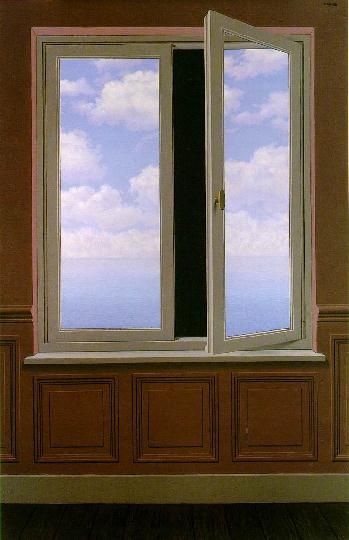Sunday, April 5, 2009 2:58:54 AM
Hi,
It's rare when you make a discovery that many great art historians that have written volumes about Magritte have missed. This is regarding Magritte's 1963 painting "La Lunette d'approche" below. I feel confident that this was exactly what Magritte meant by his title, which was a pun, referring to "The Looking Glass" which is a "field glass" but that's not what he meant.

The Looking Glass (La Lunette d'approche) 1963
Also incorrectly named called "The Field Glass" or "The Telescope" this painting shows the opening between the mirror that Alice traveled through. Through the Looking-Glass, and What Alice Found There (1871) is a work of children's literature by Lewis Carroll (Charles Lutwidge Dodgson), generally categorized as literary nonsense but the Carroll books received cult status by the surrealistists who treasured nonsense.
Through the Looking-Glass is the sequel to Alice's Adventures in Wonderland (1865). Although it makes no reference to the events in the earlier book, the themes and settings of Through the Looking-Glass make it a kind of mirror image of Wonderland: the first book begins outdoors, in the warm month of May, on Alice's birthday (May 4), uses frequent changes in size as a plot device, and draws on the imagery of playing cards; the second opens indoors on a snowy, wintry night exactly six months later, on November 4 (the day before Guy Fawkes Night), uses frequent changes in time and spatial directions as a plot device, and draws on the imagery of chess.
Magritte, who was an avid chess player, was drawn to Carroll's works and references him in both "Alice in Wonderland" and "The Empire of the Lights."
Copyright 2006 MattesonArt.com